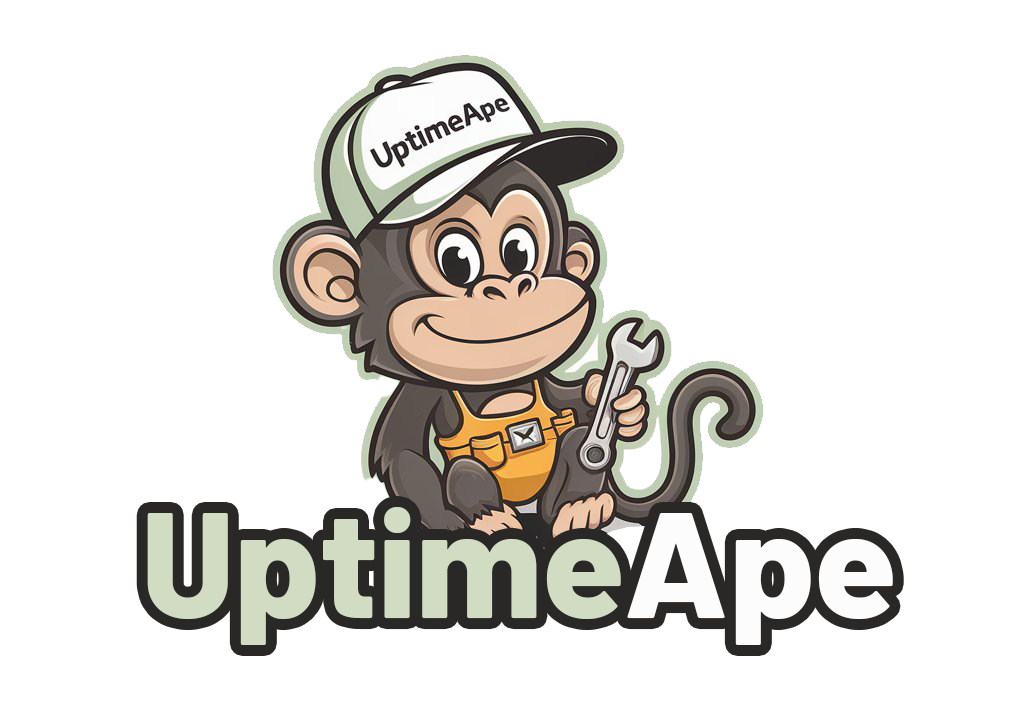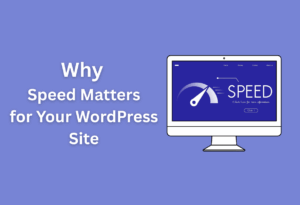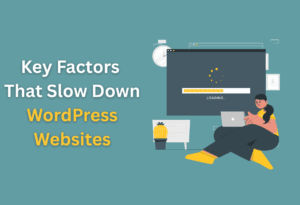Most website owners overlook the impact of cache management on user experience. Efficient caching not only speeds up page load times, but it also enhances overall satisfaction for your visitors.
When your site serves content quickly and reliably, users are more likely to engage and return. In this post, you’ll discover how effective cache strategies can improve performance, reduce server load, and ultimately lead to a better experience for your audience.
Understanding User Experience
To comprehend the significance of user experience (UX) in website performance, you first need to grasp what it entails.
Definition of User Experience
Among the various definitions of user experience, it broadly refers to how a person feels when interacting with your website. It encompasses factors such as usability, accessibility, and overall satisfaction, influencing how users perceive your digital platform.
Importance of User Experience in Web Design
Beside aesthetics, user experience is integral to effective web design, as it directly affects user engagement and retention. A well-crafted UX ensures that visitors find what they need quickly, fostering a positive environment that encourages exploration.
User satisfaction goes beyond visual appeal; it significantly impacts how long visitors stay on your site and whether they’ll return. Quality user experience leads to increased conversions, lower bounce rates, and more favorable brand perception—vital factors for online success.
Key Principles of Effective User Experience
Around the concept of user experience, several principles guide design decisions: clarity, consistency, and simplicity. These elements help you create a seamless interaction process, ultimately enhancing visitor satisfaction and engagement.
It’s important to continually evaluate and refine your UX by gathering user feedback and analyzing behavior. Prioritizing these principles ensures your website caters to user needs, making it not only functional but also enjoyable to navigate.
The Role of Cache in Web Performance
Some aspects of web performance can be significantly enhanced through efficient cache management. By storing frequently accessed information nearby, cache plays a fundamental role in ensuring that your website loads swiftly and smoothly for users. The right caching strategies can make all the difference in user experience and website efficiency.
What is Caching?
Behind the scenes, caching is the process of storing copies of files or data in locations that allow for faster access. When a user visits your website, their browser or a server can save this information to reduce the time it takes to retrieve content on subsequent visits. This optimization not only speeds up load times but also lightens the load on your server.
Types of Cache (Browser Cache, Server Cache, etc.)
Browser caching involves storing web assets on a user’s local system, minimizing the need for frequent requests to your server. Server cache, on the other hand, refers to the practice of storing information on the server side to improve response times. Other form includes CDN cache, which serves content from various geographical locations, enabling faster access by bringing the content closer to users.
- Browser Cache: Stores files on the user’s device.
- Server Cache: Saves data on the server for quicker retrieval.
- CDN Cache: Delivers content from multiple geographic locations.
- Object Cache: Saves database query results.
- Opcode Cache: Stores compiled PHP scripts for efficiency.
Thou can see how each type contributes uniquely to your website’s performance.
| Cache Type | Benefits |
|---|---|
| Browser Cache | Reduces load times for repeat visits. |
| Server Cache | Decreases server load and improves response time. |
| CDN Cache | Enhances content delivery speed globally. |
| Object Cache | Improves database performance by reusing results. |
| Opcode Cache | Simplifies PHP execution for faster script loading. |
Cache management is vital for optimizing web performance because it allows you to cater to your audience’s demands effectively. By implementing diverse cache types, you can streamline data delivery and enhance the user journey on your website.
- Boosts overall site speed.
- Optimizes resource usage on servers.
- Improves user satisfaction with reduced loading times.
- Minimizes server response times.
- Facilitates a better engagement rate.
Thou will want to leverage these advantages to create a more efficient and user-friendly website.
The Process of Caching
Caching occurs when data is stored in a temporary location after it’s requested, allowing for quicker future retrieval. This mechanism ensures that when users revisit your site or similar pages, they experience a near-instant load time, which is vital for retaining their attention.
Caching enhances your website’s functionality by holding onto commonly accessed data. This stored information allows your server to provide users with the requested content much faster than if it had to fetch it from the original source each time.
To ensure optimal performance, implement strategies such as cache expiry policies, which dictate how long certain data should be stored before it’s refreshed. This balance of freshness and speed is vital for maintaining the integrity of the user experience while maximizing performance.
Advantages of Caching for Website Performance
Types of caching lead to numerous advantages that directly influence your website’s performance. When effectively applied, you can significantly reduce loading times and server strain, which in turn elevates user satisfaction and engagement.
In addition, caching allows you to minimize bandwidth usage and speeds up data delivery, translating into a better experience for your users. Not only will this improve the perceived performance of your website, but it can also positively impact search engine rankings, making caching a pivotal strategy in your web optimization efforts.
Impacts of Cache Management on User Experience
Many factors contribute to the overall user experience of your website, with cache management being a primary influence. An effective caching strategy can significantly enhance the usability and performance of your site, ultimately leading to increased user satisfaction and engagement.
Page Load Speed
Above all, page load speed plays a vital role in how users interact with your website. Efficient cache management minimizes the time it takes to load pages, allowing visitors to access content swiftly without unnecessary delays. This immediacy keeps users engaged and enhances their overall experience.
Reducing Latency
Below, latency—which is the time it takes for data to travel from the server to the user’s device—can greatly affect user satisfaction. Efficient cache management reduces the distance data must travel by storing frequently accessed information closer to the user, resulting in faster responses and seamless browsing.
Hence, when latency is minimized, users experience smoother interactions with your site. This will mitigate frustration from delays and provide an overall better experience, ensuring that visitors are more likely to return in the future. By employing effective cache strategies, you can positively impact the load time and responsiveness of your site.
Influence on User Retention and Engagement
Against the backdrop of competition, retaining users is necessary. A well-managed cache leads to improved website speed and performance, which is key to keeping users engaged. When visitors have a positive experience on your site, they are more likely to return and recommend it to others.
Plus, enhanced user retention and engagement stem from a streamlined browsing experience. When users encounter minimal lag and swift access to content, they are more inclined to explore multiple pages, increasing the likelihood of them returning for repeat visits. A fast and responsive website creates a sense of reliability and trust, which can cement user loyalty.
Case Studies on Cache Management and UX
With various real-world examples, the impact of cache management on user experience is evident. Numerous organizations have successfully implemented caching strategies that delivered significant performance improvements:
- Company A: Reduced average page load time from 8 seconds to 2 seconds, increasing user engagement by 50%.
- Company B: Saw a 40% rise in user retention after optimizing their caching mechanisms.
- Company C: Reported a 30% decrease in bounce rates due to faster load times from effective cache management.
- Company D: Improved site performance leading to a 20% boost in conversions after implementing a robust caching solution.
Load your website with the potential for success by examining how these case studies demonstrate the profound worth of cache management. These tangible results illustrate that optimizing caching not only improves technical performance but also significantly enhances user experience. You’ll find that investing in efficient cache strategies pays dividends for user satisfaction and loyalty.
Best Practices for Efficient Cache Management
Now that you understand the importance of cache management, let’s explore best practices that you can implement to optimize your website’s user experience.
Setting Cache Policies
Among the first steps in efficient cache management is setting appropriate cache policies. These policies dictate how long resources should remain in cache before being updated, aligning with both the content’s volatility and user needs. By tailoring these settings, you ensure that users see the most relevant content while enhancing load times.
Using Content Delivery Networks (CDNs)
About utilizing CDNs, you can significantly improve load times for users across different geographical locations. CDNs distribute your website content across multiple servers worldwide, allowing users to access data from a nearby server, reducing latency and enhancing performance.
Best of all, CDNs not only accelerate content delivery but also alleviate the load on your main server during peak traffic times. This means your website can handle increased user interactions without compromising on response speed. By integrating a CDN, you can deliver a smoother and more reliable user experience, thereby retaining visitors and improving engagement rates.
Regular Cache Clearing and Maintenance
On implementing cache management, regular cache clearing and maintenance are vital to your strategy. Over time, outdated files can accumulate, leading to discrepancies and slow load times. Keeping your cache clean ensures that your users always receive the most current version of your content.
Also, by scheduling routine cache clearings, you proactively manage data freshness and performance. This practice not only improves site reliability but also boosts your SEO efforts as search engines favor frequently updated sites. A well-maintained cache keeps your user experience optimized and encourages repeat visits.
Tools for Monitoring Cache Performance
Cache performance is an vital element in maintaining an efficient caching strategy. Using various tools, you can monitor cache hit ratios, response times, and overall effectiveness. These metrics help you identify areas for improvement and necessary adjustments to your caching policies.
Performance monitoring tools give you valuable insights into how users interact with your website. By continuously analyzing these metrics, you can refine your cache settings, ensuring resources are used optimally.
This proactive approach enables you to provide an exceptional user experience while facilitating better site performance. Engaging with these tools empowers you to stay ahead of potential issues and maintain smooth operations.
Common Challenges in Cache Management
All websites face various challenges in cache management that can hinder user experience. Understanding these challenges is vital for optimizing your site’s performance and ensuring that users receive the most relevant and timely information.
Cache Invalidation
Beside ensuring that your cache is efficient, you must also deal with cache invalidation. This process involves identifying when cached data becomes outdated. If you fail to invalidate or refresh your cache when necessary, users may encounter stale content, leading to frustration and a diminished experience on your site.
Over-Caching Issues
Cache efficiency can suffer when excessive caching occurs, a phenomenon known as over-caching. This often results in unnecessary complexity. When too many files or assets are cached, your server may struggle to manage them effectively, leading to slower load times and an increased risk of serving outdated information.
The issues arising from over-caching can seriously detract from your website’s performance. You might find that users experience delays or inconsistencies because a large volume of information is being stored and retrieved. Streamlining your cache strategy is key to avoid overwhelming your system and keeping your website responsive.
Balancing Freshness and Performance
Between maintaining up-to-date content and optimizing performance, achieving the right balance can be challenging. You want to ensure that users access the latest information while still benefiting from fast load times. Striking this balance requires a strategic approach to cache management that considers the needs of your specific website.
But finding harmony between freshness and performance often involves setting cache expiry times, which are too short or too long. Short-lived caches can overwhelm your server with requests, while long ones may lead to outdated content. You need to analyze user behavior and content update frequency to establish caching rules that satisfy both aspects effectively.
Advanced Strategies for Optimizing Cache
For optimal website performance, it’s crucial to implement advanced strategies for cache management. By fine-tuning your cache settings, you can significantly enhance user experience and reduce load times. Here are several strategies that can help you achieve efficient cache management:
- Implement Content Delivery Networks (CDN)
- Utilize Browser Caching
- Optimize Cache Expiry Policies
- Employ Object Caching Techniques
- Integrate Lazy Loading for Images and Videos
- Apply Dynamic Caching Strategies
- Incorporate User Behavior Data
| Strategy | Description |
|---|---|
| Content Delivery Networks (CDN) | Distributes your content globally to reduce latency |
| Browser Caching | Allows browsers to store frequently accessed resources locally |
| Cache Expiry Policies | Sets rules for when cached content should be refreshed |
| Object Caching | Stores database query results to speed up repetitive requests |
Lazy Loading Techniques
Loading images and videos only when they come into the viewport can dramatically enhance initial load times. By implementing lazy loading techniques, you can ensure that your page loads only the content visible to users, conserving both cached data and bandwidth.
This practice is particularly effective for pages with numerous multimedia elements, as it enables quicker interactions and a more seamless browsing experience.
Dynamic Caching Strategies
Any website can benefit from dynamic caching strategies, which serve cached content based on user-specific data or context. This approach enables you to cater to individual user needs, leading to faster loading times for frequently accessed resources. With dynamic caching, you can dynamically update content based on user interactions without needing a complete cache refresh.
Due to the variability in user behavior, dynamic caching methods allow you to personalize experiences, which promotes engagement. By intelligently caching the most relevant content for each user or segment, you can ensure that they receive a tailored browsing experience, improving satisfaction and retention.
Incorporating User Behavior Data
With insights derived from user behavior, you can enhance your cache strategy by determining which content requires caching based on popularity and user trends. This data will enable you to prioritize frequently accessed resources and effectively allocate cache space, ensuring that users quickly access the most relevant information.
Advanced analytics allow you to monitor how users interact with your website, empowering you to make data-driven decisions about your caching strategy. By continuously analyzing visitor behavior, you can refine your cache management practices to adapt to evolving user preferences, ultimately leading to a more responsive and engaging website experience.
Conclusion
Now that you understand the importance of efficient cache management, you can appreciate how it directly impacts your website user’s experience. By optimizing your cache, you improve load times, enhance usability, and ensure that your content is current and relevant.
This not only keeps your visitors engaged but also helps in building credibility for your brand. Adopting best practices in cache management ultimately leads to a more satisfying experience for your users, making it pivotal to your website’s overall performance.





